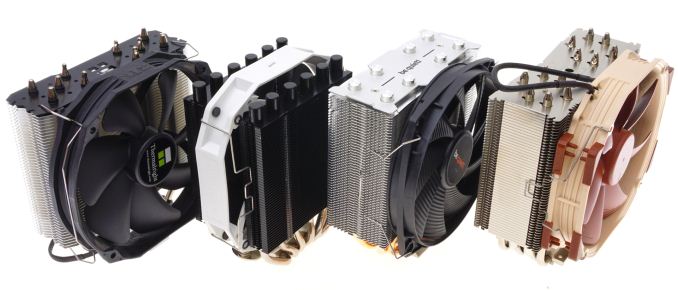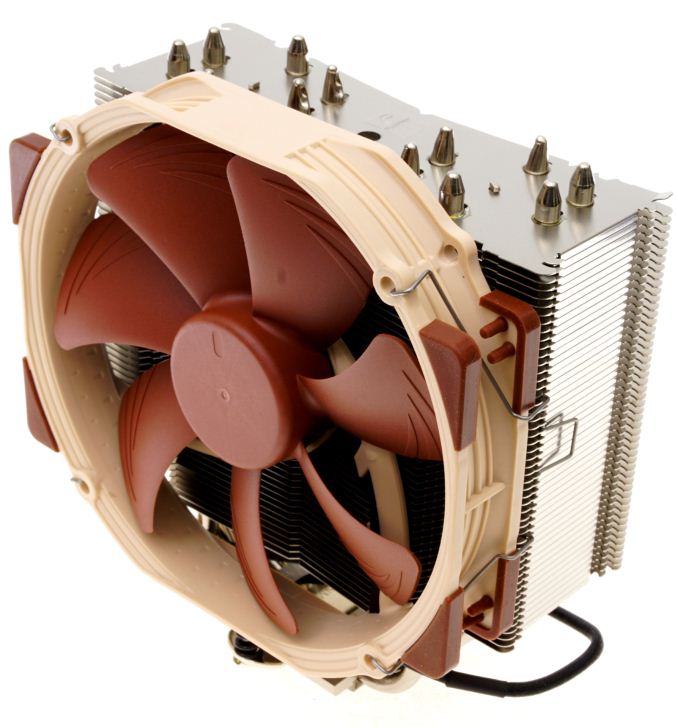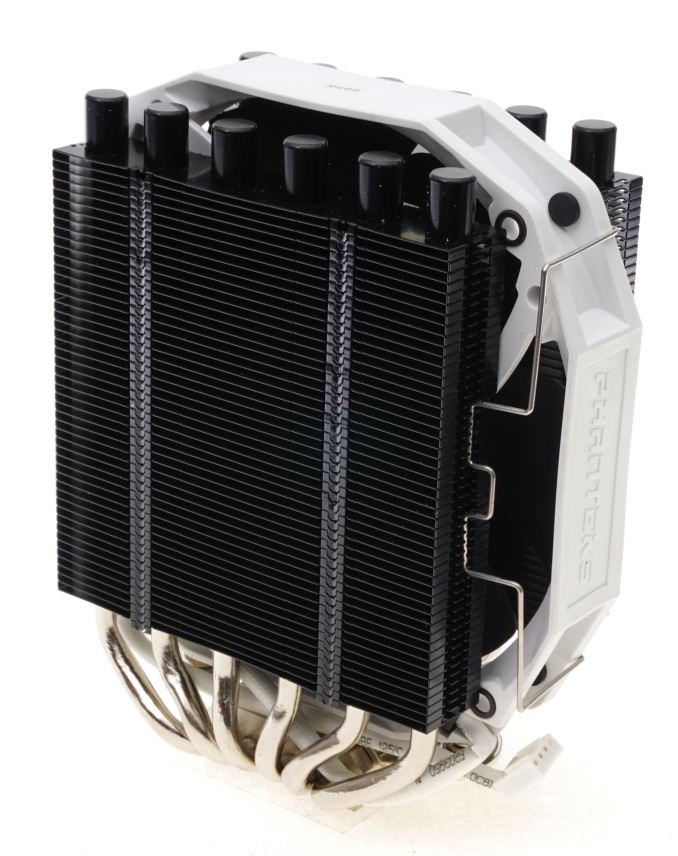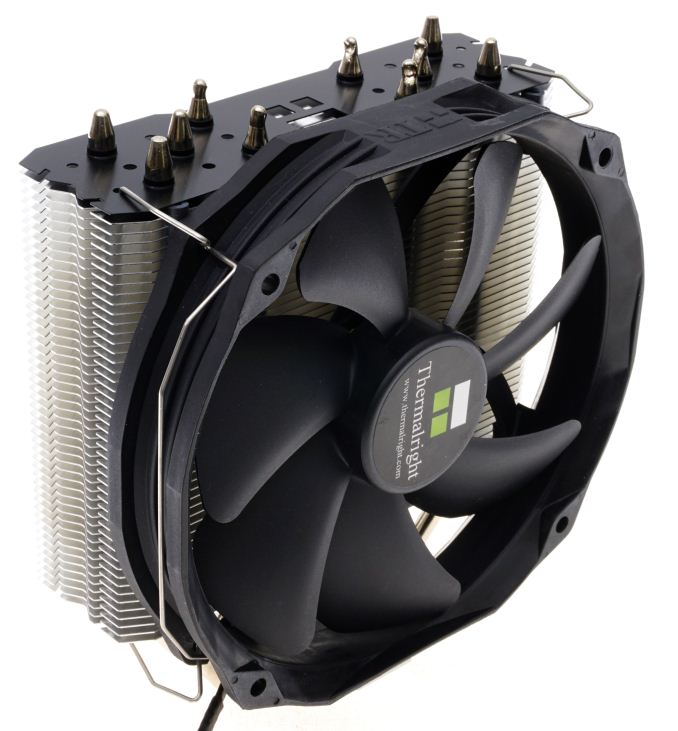The 140mm Slim Tower CPU Cooler Roundup: Thin & Light Done Just Right
by E. Fylladitakis on May 24, 2017 8:00 AM EST- Posted in
- Cases/Cooling/PSUs
- be quiet!
- Noctua
- Phanteks
- Cooler
- Thermalright
Final Words
Although 140 mm tower coolers are slightly restrictive in their compatibility – essentially requiring the user to own a case that is wide enough to fit them – their close pricing and superior characteristics relative to 120 mm tower coolers makes them the sensible choice for every enthusiast that owns a compatible case. The four coolers in this review are but a small sample of the “slim” 140 mm coolers available today, comprising of the higher quality and most popular models.
Out of these four coolers, Noctua’s NH-U14S stands out by pretty much every metric. It is a little larger than the other three coolers and, even though the difference is small, extra caution is required when checking whether it can fit inside a case. At $65 it's also more expensive than the other three models by around 30% ($15), which makes it substantially more expensive. Nevertheless, the thermal performance of the NH-U14S is significantly superior as well, especially when the cooler needs to handle a high thermal load. This higher thermal performance coupled with Noctua's excellent reputation for their after-sales support gives the NH-U14S an edge over its competition, regardless of its higher retail price.
The Phanteks PH-TC14S was the oddity of this review. Instead of doing a single tower cooler, the designer’s solution for a “slim” design was a greatly cropped version of the monstrous PH-TC14PE. The narrow and thin towers hardly cover the effective airflow area of the 140 mm fan that is sandwiched between them, and the positions of the heatpipes do not appear to be optimal. Still, the PH-TC14S performs very well overall, better than what we originally anticipated when we physically examined the cooler. The lack of mass places it at a disadvantage when it needs to deal with very high thermal loads, but it will be more than sufficient for the average gamer and amateur overclocker. It also is the only cooler that is currently available with black fins, drawing the attention of those who prioritize aesthetics over small performance differences.
Thermalright’s True Spirit 140 Direct was the surprise performance of this roundup review. Nothing foretold that the otherwise simple-looking cooler could give the competition such a push. The direct contact design of the True Spirit 140 Direct grants the cooler excellent energy absorption efficiency, giving the cooler a significant performance advantage that is especially apparent when the thermal load is low. This design makes the True Spirit 140 Direct particularly efficient when dealing with low thermal loads, i.e. modern efficient CPUs that will not be significantly overclocked. It is not as efficient when it has to deal with a very high thermal load, as it cannot dissipate the amassing thermal energy as quickly as Noctua’s behemoth can, but even then the performance figures remain very good. Its sound pressure levels are relatively low as well, making it a sensible choice for users who want a relatively simple, efficient, low noise product.
Finally, the Be Quiet! Shadow Rock Slim is not the best overall performer of this roundup review, but we feel that it is right where the company wanted it to be. Its thermal performance is competitive, rivaling that of every other cooler in this roundup, and even coming close to its much larger and considerably more expensive counterpart, the Dark Rock Pro 3. At the same time, the sound pressure level readings of the Shadow Rock Slim are the lowest of this review, even if only by a little, making it the quietest of the coolers. Overall, the Shadow Rock Slim is a balanced, high quality cooler that should appeal to the widest user’s base in comparison to the other coolers of this review. If the company were to bring the price of the cooler down even just a bit, then the competition would have a lot to worry about.















74 Comments
View All Comments
guidryp - Wednesday, May 24, 2017 - link
IMO, it looks like the Thermalright is the the winner. It's the least expensive, and up to 150 watts, it keeps the lowest temperature. How many CPUs pull over 150 watts? Especially in real world workloads, not torture testing??JoeyJoJo123 - Wednesday, May 24, 2017 - link
That would seem to be the case here, yes. Performs as well as the Noctua (better than the Noctua at low loads and nearly equal at high loads), while being physically smaller, and cheaper, too.The black and silver finish is relatively attractive, too, but appearances are subjective anyways.
A5 - Wednesday, May 24, 2017 - link
Agreed, and I own the Noctua.I've had Thermalright products in the past and they were excellent as well.
ShieTar - Wednesday, May 24, 2017 - link
That only remains true if the CPU produces power over the same area as the thermal cartridge used in the test. The problem, specifically with Intels latest 4-Cores, is that they generate 100W on a much smaller area. Then the overall cooling capability and the vertical thermal resistance of the cooler become less relevant, and the lateral thermal resistance of the cooler base-plate becomes increasingly critical. That is why an i7-7700K will run much hotter than older CPUs with the same TDP, but much more die area.JoeyJoJo123 - Wednesday, May 24, 2017 - link
You're not wrong, but there's more to that story.It's also partially attributable to Intel's usage of poor TIM between the die and the integrated heatspreader, rather than their older usage of fluxless solder.
Intel's newer chips (due to smaller die sizes and poorer thermal interface for the integrated heatspreader) means that by the time the heat meets the heatsink vs integrated heatspreader contact area, it's not being dissipated as efficiently as older CPU models.
guidryp - Wednesday, May 24, 2017 - link
I think you have the situation backwards. The way the Thermalright excels at lower temperatures and it's direct heatpipe design indicate it has superb transfer from the socket.It only falls behind later when when the smaller heatsink array can't dissipate it as quickly.
Eri Hyva - Wednesday, May 24, 2017 - link
Please, add a test with 9 volts.Arbie - Wednesday, May 24, 2017 - link
Other sites reviewing coolers (eg X-Bit Labs R.I.P.) have found ways to plot cooling ability vs noise level. That makes it much easier to evaluate and choose the best one. IIRC one site even got cost into the same picture. In any case, leaving the reader to separately juggle delta-T and dBA is weak.Galcobar - Thursday, May 25, 2017 - link
Gold standard for standardized testing the efficiency of noise to cooling is Silent PC Review.Unfortunately, the site suffered a serious lack of ad revenue and seemed to go into the media death spiral of lack of readership>lack of revenue>lack of content>lack of readership. Hasn't been a posting since August.
snarfbot - Wednesday, May 24, 2017 - link
Well the article measures perf as shipped which while good is not apples to apples as they all use diff fans. They should be measured separately with the same fan installed into each to take fan speed, voltage and noise out of the equation.